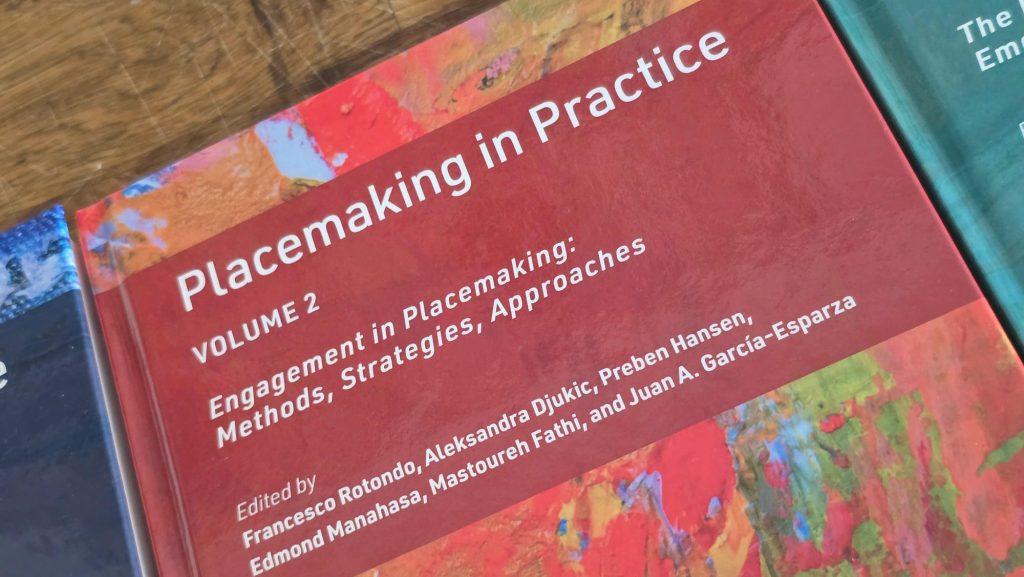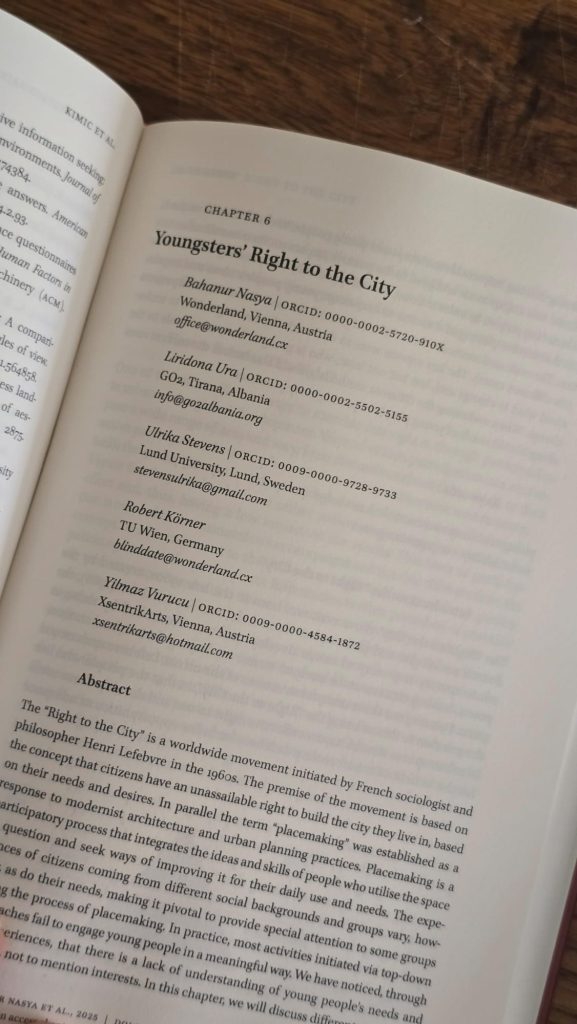We are proud to have contributed to all three volumes of this important publication series on placemaking as members of wonderland. Each volume offers a valuable platform for exchanging knowledge, practices, and innovative approaches to shaping urban spaces across Europe. Our articles reflect our ongoing commitment to inclusive, community-driven urban development and our belief in the power of collaboration to create meaningful change.
Placemaking in Practice is a three-volume series that offers a comprehensive, multidisciplinary exploration of placemaking in contemporary Europe, examining its evolution in the context of digitization, mobility, and urban transformation. It combines theoretical foundations with practical methodologies to understand how diverse actors, including professionals, citizens, and virtual communities, collaborate across physical and digital spaces. From grounded practices to emerging challenges, the series highlights community engagement, inclusive strategies, and sustainable innovation as key to shaping future urban environments in a rapidly changing world.
We’re very happy to have been published in all three volumes.


We’re excited to have had the opportunity to contribute to all three volumes.
Volume 1 features an article co-written by Wonderland’s Bahanur Nasya alongside Conor Horan, Clara Julia Reich, and Roland Krebs : Using Dialogical Exchanges and Social Interactions to Evaluate and Improve Placemaking Practices.
The article explores how the success of placemaking initiatives is closely tied to the quality and density of engagement among diverse stakeholders. By examining three types of dialogical exchanges—between people, with objects, and with abstract ideas—the authors highlight the importance of recognizing and designing for these interactions from the outset. Through case studies in Oslo, Vienna, and Lisbon, they show how understanding these hidden layers of communication can enhance the sustainability, impact, and knowledge-producing potential of placemaking.
Volume 1 also includes an article titled Improving the Impact of Placemaking Practices: An Engaged Scholarship Approach co-written by Wonderland’s Bahanur Nasya alongside Conor Horan, Anna Louise Bradley and Laura Martinez-Izquierdo. The article explores how early and inclusive stakeholder engagement can enhance the impact and sustainability of placemaking initiatives. By comparing four diverse cases—in Oslo, Vienna, Bratislava, and the Netherlands—the authors demonstrate how a process-based, engaged scholarship approach can improve participatory practices. Emphasizing the value of embracing conflict and collaboration from the outset, the chapter offers a practical tool for designing more effective, community-driven placemaking projects.
Volume 2 includes an article co-written by Wonderland’s Bahanur Nasya, Robert Körner, Ulrika Stevens and Yilmaz Vurucu alongside Liridona Ura: Youngsters right to the city.
The article examines how placemaking, rooted in the “Right to the City” movement, can better engage young people by recognizing their unique needs, interests, and perspectives. It highlights the limitations of top-down approaches and explores the use of play-based methods (tested across six international cases) as tools to empower youth and foster meaningful participation. By evaluating these methods, the chapter advocates for more inclusive and imaginative approaches to participatory urban development.
Volume 3 includes an article co-written by Wonderland’s Bahanur Nasya alongside Mastoureh Fathi, Asma Mehan , Jasna Mariotti , and Tatsiana Astrouskaya : Homemaking or Placemaking? Understanding Home and Place among Vulnerable Populations
The article explores the future of placemaking in a digitized world, focusing on inclusive strategies, sustainable initiatives, and community engagement. It offers a multidimensional perspective on how digital innovation intersects with public space, presenting new frameworks for addressing urban challenges. Aimed at both scholars and practitioners, it provides insights into shaping more adaptive and resilient urban environments for the future.